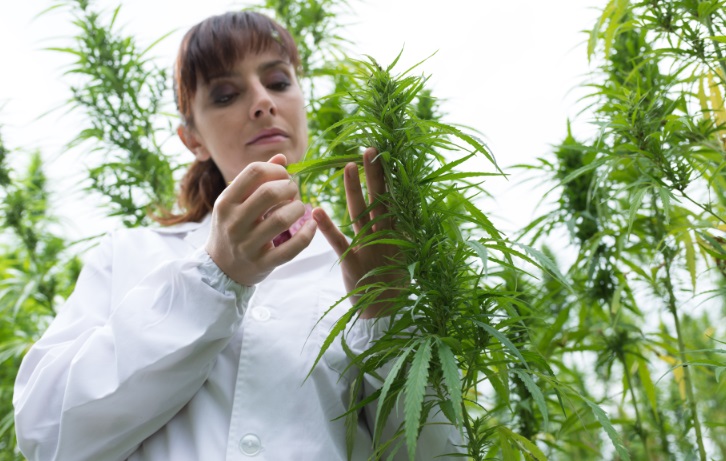Not long ago, cannabis growers learned their trade mainly by trial and error, passing along tips to others behind a veil of secrecy. But with expanding legalization of cannabis in the U.S., this situation is changing. According to an article in Chemical & Engineering News (C&EN), the weekly news magazine of the American Chemical Society, cannabis growers are starting to benefit from increased communication and scientific research about the plant and its cultivation.
Melody Bomgardner, senior editor, notes that in several U.S. states, cannabis is now a high-value crop that can be grown legally. In Oregon, monthly sales of cannabis have skyrocketed to an annualized rate of $480 million, according to the state’s Office of Economic Analysis. This booming business has attracted the interest of manufacturers of agricultural pesticides, fertilizers and equipment. Yet because the drug remains illegal at the federal level, cannabis has yet to benefit from federally sponsored research programs that support mainstream crops.
State agricultural organizations and some researchers are now working to fill that gap. One of the challenges they face is pest and disease management. Because state laws prohibit most synthetic pesticides for cannabis use, many growers turn to predatory organisms and other biological means of pest control, for example, green lacewings that eat aphids. Other efforts to improve cannabis agronomy include establishing the best fertilizers and growing conditions for the plant, and sequencing the cannabis genome to discover why some varieties produce higher levels of certain compounds, such as the hallucinogen tetrahydrocannabinol. As the social stigma surrounding cannabis fades, the demand for trained scientists will grow, industry experts say.
###
The article, “Nurturing cannabis,” is freely available here.
The American Chemical Society, the world’s largest scientific society, is a not-for-profit organization chartered by the U.S. Congress. ACS is a global leader in providing access to chemistry-related information and research through its multiple databases, peer-reviewed journals and scientific conferences. ACS does not conduct research, but publishes and publicizes peer-reviewed scientific studies. Its main offices are in Washington, D.C., and Columbus, Ohio.
To automatically receive news releases from the American Chemical Society, contact [email protected].
Follow us on Twitter | Facebook
Media Contact
Katie Cottingham
[email protected]
301-775-8455
@ACSpressroom
http://www.acs.org





